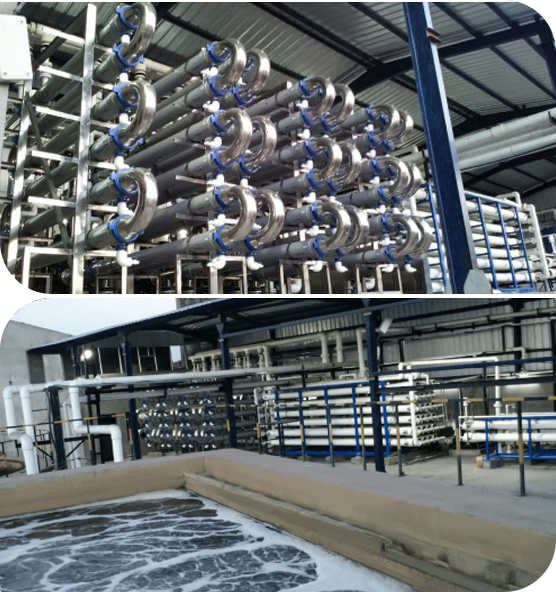
Waterman Engineers Australia has become the main producers of Zero Liquid Discharge technique. A ZLD process is usually a procedure process that is made use of to remove every one of the liquid squander from a system. The aim of ZLD drinking water remedy is to lower wastewater economically and generate potable h2o that is certainly in good shape for regular use. Zero discharge system is an advanced procedure technique that comprises ultrafiltration, reverse osmosis, evaporation and fractional electro deionization. And we are a effectively-recognized supplier of ZLD methods.
In many Industries, which include electricity, oil & gasoline, chemicals, mining and others, a great deal of wastewater is produced that must be managed. Conventionally, this discharge of wastewater is completed via a plant outfall to your surface drinking water entire body like an evaporation pond, or in some instances deep properly injected. These methods bring about quite a few environmental issues by the public in several regions of the earth, as drinking water can be a scarce supply and its management need to be monitored. These worries have resulted while in the establishment of ZLD procedures by several industries to minimize their environmental footprint and greatly enhance sustainability. And, Waterman Engineers Australia are finest ZLD suppliers you can find for This method.
Attributes OF ZERO LIQUID DISCHARGE Method
The properties of the Zero Liquid Discharge system can vary with regards to the unique design and style and technology employed. Having said that, some popular Attributes of ZLD systems consist of:
H2o Conservation: Certainly one of the main aims of ZLD methods is always to conserve water by minimizing the discharge of liquid squander in the atmosphere.
High Drinking water Purity: ZLD systems are built to generate superior-high quality h2o that's free of charge from impurities and contaminants, which makes them suitable for use in several industrial processes.
Flexibility: ZLD methods are frequently created to support a broad array of input liquid streams, that makes them multipurpose and suitable for use in different industries.
State-of-the-art Wastewater Therapy: Zero liquid discharge programs use State-of-the-art wastewater therapy techniques to get rid of impurities and contaminants with the effluent, making substantial-high-quality water.
Waste Reduction: ZLD systems assist reduce squander by minimizing the quantity of liquid waste that needs to be disposed of and by manufacturing a concentrated, stable waste content that could be safely disposed of.
Energy Performance: ZLD units is usually energy-intense a result of the large Strength needs of evaporation along with other wastewater therapy processes. However, advancements in engineering are making Zero liquid discharge techniques additional Strength-economical and cost-successful.
Waterman Engineers Australia manufactures Zero Liquid Discharge (ZLD) Zld System Manufacturer Zero Liquid Discharge System units meant to take away all liquid waste, aiming to create potable water and lessen environmental impact. Their ZLD devices ordinarily incorporate ultrafiltration, reverse osmosis, evaporation, and fractional electro deionization. Important systems made use of are Slipping Film Brine Concentrators, Forced Circulation Crystallizer, and Other individuals, with a two-move strategy of pre-focus and evaporation/crystallization to Get better and reuse water. These methods are adaptable to different industries, emphasizing drinking water conservation, substantial water purity, waste reduction, and Electrical power efficiency. Technical technical specs are varied and customizable, thinking about elements like h2o source, move amount, and feed water top quality.
The necessity for Zero Liquid Discharge (ZLD) methods occurs in the necessity to deal with environmental concerns related to drinking water scarcity and air pollution. In industries like power, oil & gas, and mining, wide quantities of wastewater are produced. Typically, this wastewater is discharged into bodies of water, triggering air pollution and depleting clear water resources. ZLD techniques aim to attenuate these impacts by dealing with and recycling wastewater within the economic procedure, thereby conserving h2o, cutting down waste, and selling sustainability.
When considering the specialized specifications of a Zero Liquid Discharge (ZLD) process, crucial factors to center on include things like the water supply it will eventually deal with, the procedure's stream level, the quality of feed drinking water, the phases of treatment method involved, the recovery amount of h2o, strategies for concentrate disposal, materials of building, running circumstances, and process automation and control. These aspects make sure the process's performance, longevity, and effectiveness in treating and recycling industrial wastewater.
Zero Liquid Discharge (ZLD) crops offer benefits which include drinking water conservation, squander reduction, and air pollution prevention, contributing to environmental sustainability. They are relevant in industries like ability era, oil and gas, chemicals, and mining, where they assist in taking care of industrial wastewater efficiently, reducing the ecological footprint, and complying with strict environmental laws. These units are very important in parts facing drinking water scarcity and for industries aiming to boost their sustainability and operational efficiency.
FAQs to get a Zero Liquid Discharge (ZLD) system usually handle its operational principles, Value-usefulness, routine maintenance needs, environmental affect, applicability throughout various industries, and regulatory compliance. These queries enable end users fully grasp the method's Gains, technical calls for, and suitability for their specific wastewater administration desires.
1. Zero Liquid Discharge (ZLD) is usually a wastewater treatment course of action intended to remove all liquid waste.
2. The process's factors are influenced by the particular industrial system, wastewater composition, and regulatory requirements.
three. Effluent treatment method crops remove pollutants from textile effluents to prevent environmental contamination.
four. Advantages include h2o conservation, air pollution reduction, and regulatory compliance.
five. The purpose is to reduce environmental effect by recycling water and reducing squander.
six-9. Effluent treatment crops are phases in wastewater treatment method: Major (physical separation), secondary (Organic cure), and tertiary (State-of-the-art treatment method).
10. Device operations include filtration, sedimentation, Organic treatment method, and disinfection.
11. Restricting parameters are aspects that impact the treatment's effectiveness, like pH and contaminant concentration.
twelve. Design and style considerations involve circulation price, effluent composition, and wished-for good quality of handled h2o.